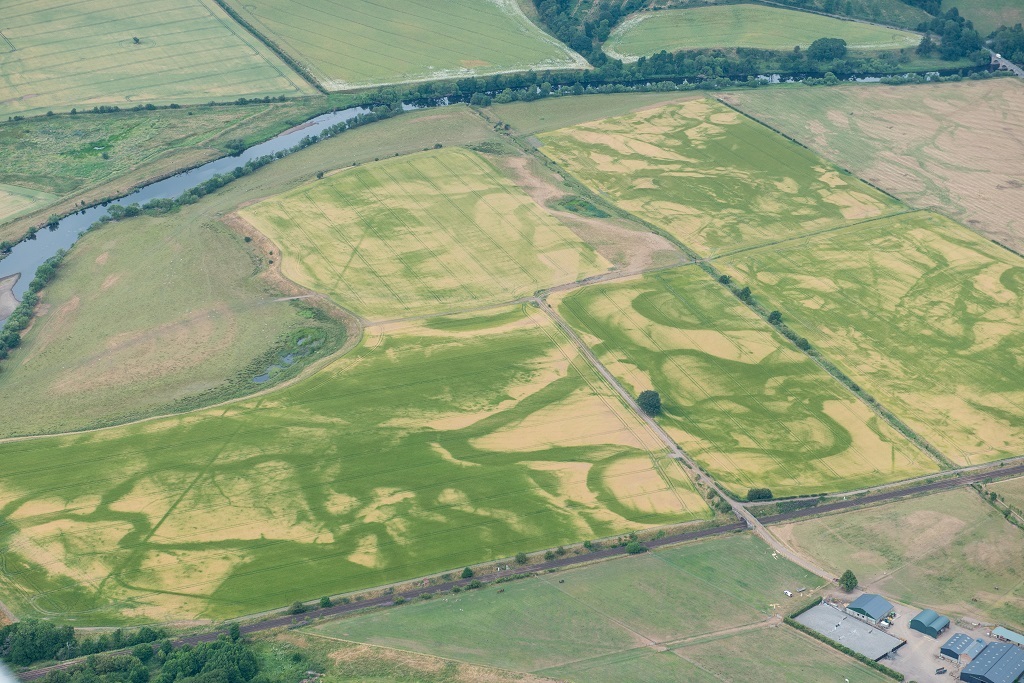
Scotland’s secret past is slowly revealing itself
This summer’s heatwave has helped reveal Scotland’s past through some incredible crop marks.
Crop marks showing ancient settlements and Roman fortifications, which are otherwise hidden under the plough soil, are being documented by Historic Environment Scotland.
Newly discovered sites revealed by HES’ aerial survey team during the recent warm weather include Iron Age souterrains in the Borders – a rare find in this part of Scotland – and a Roman temporary camp.
The camp was discovered within the known Roman complex of sites at Lyne near Peebles and adds to the significance of the complex, which already includes two forts and two additional temporary camps.
The extensive marks form as the crops respond to dry conditions and have allowed the team to document known sites that have not been visible for many years.

The straight lines of the Roman temporary camp in Stratheran stand out against patterns of ancient water courses
Iron Age burials, Neolithic pits and prehistoric settlements are all marked out in the fields, against a backdrop of long-infilled rivers and streams which tell the story of Scotland’s landscape.
Aerial reconnaissance to searching lowland areas for buried sites that show as cropmarks has led to more than 9000 such sites being recorded to date.
Dave Cowley, aerial survey project manager at Historic Environment Scotland, said: ‘Aerial surveys of Scotland have been carried out since the 1930s, with each year usually adding a little more to the patchwork of our knowledge.
‘We depend on dry years to bring out the buried remains in the crops, so we are currently out hunting for new clues from the skies while the good weather lasts.
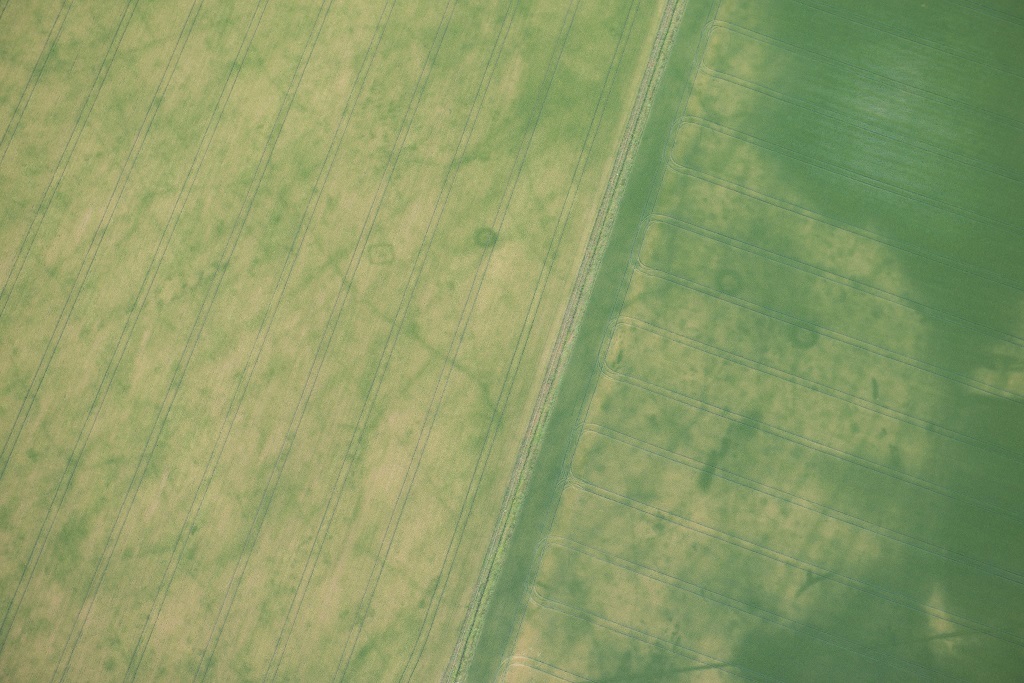
Three small round ditches and one square ditch reveal what was probably Iron Age burials
‘The conditions this year are showing us many sites that we knew were there, but may not have seen in recent damp summers, as well as revealing new archaeological sites that add to our ability to see into the past to tell Scotland’s story.’
Historic Environment Scotland’s aerial survey team search Scotland from the sky in order to understand and record Scotland’s historic environment, and have discovered and recorded more than 9,000 buried sites to date. For further information click HERE.
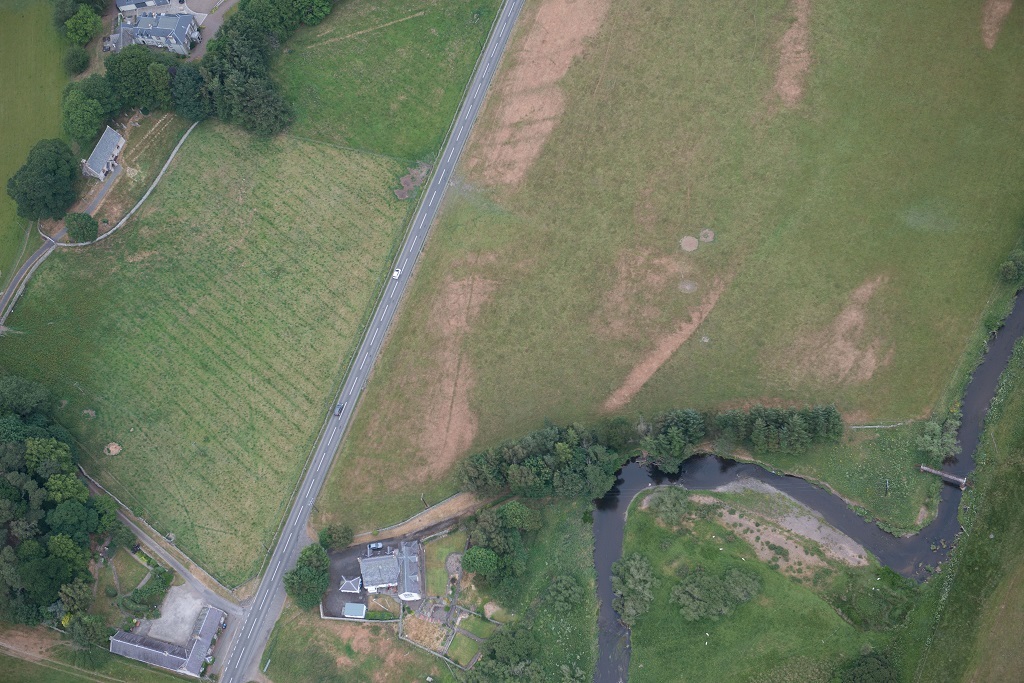
A Roman temporary camp at Lyne
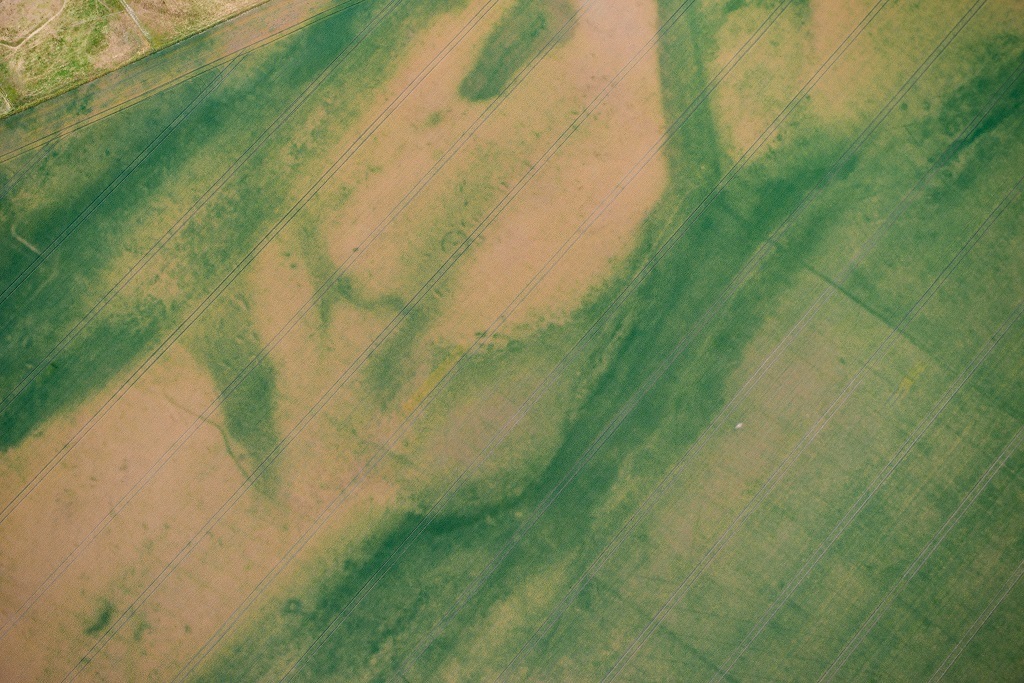
A barrow and pit defined structure from between 500 and 3,500 years ago
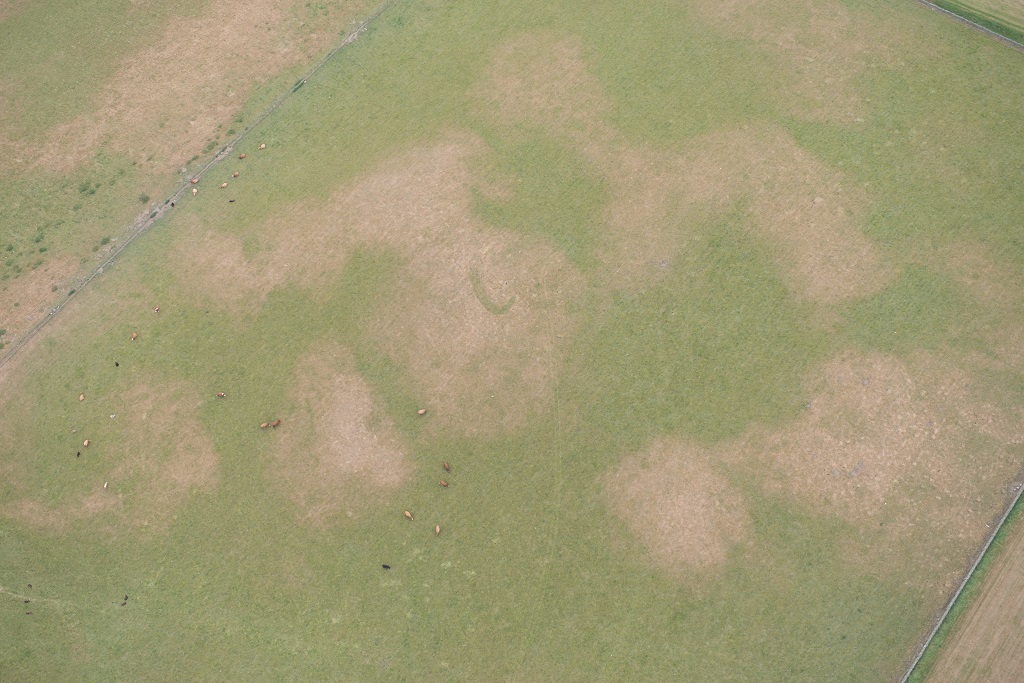
Parched grass shows up the banana shaped outline of what is probably a souterrain or Iron Age passage
TAGS

